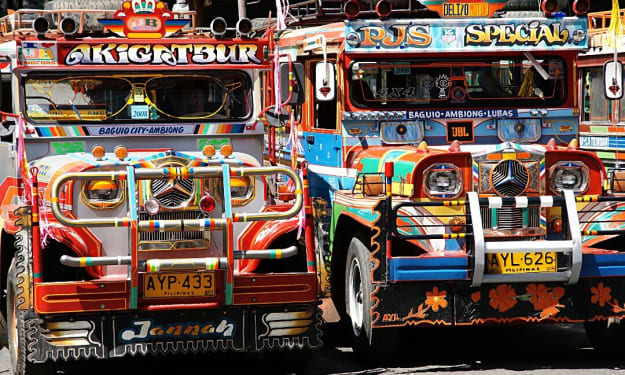2020 is changing cities around the world
This year is the biggest ride anyone's ever had

Cities are more important for our lives than many might think. Cities are densely populated settlements with diversified industries, uniting manufacturing, tech sector, healthcare, education, and a long-range of other services available at the highest level. Cities are innovative and powerful, shifting status quos and influencing the rest of the world. Every aspect of the cities’ structure plays a crucial role in shaping their uniqueness, charm, success, and the future.
According to the United Nations (UN), roughly 55% of the global population already lives in urban areas. The organization estimates that by 2050 this number will reach approximately 68%. The number of people living in cities and metropolitan areas will be significantly higher by then, considering the rapidly growing global population. The vast majority of this increase will be concentrated across Asia and Africa.
The demographics of cities have not always been similar around the world. For centuries, the rich western countries managed to develop major cities from Athens to Rome and London. These cities, primarily in Europe, continue to impact the globe. However, the game is changing as Asian megacities are quickly becoming leaders of the world. Their influence is rapidly soaring, influencing culture, economy, and technology around the world.
Cities will millions of residents and even more visitors each and every year require decent transportation. That is what pushes so many Asian and African cities behind. Undoubtedly, in this regard, Europe is a frontrunner. In the mid 20th century, Europe and North America took two different roads towards developing their transportation systems.
The United States decided to prioritize private vehicles by building major motorways all across the nation. They are still dominating the country, including cities and their central areas. On the other hand, Europe pushed for a greener, more efficient, and smart solution. By focusing on public transport and its advancement, the continent became relatively car-free. Despite the fact that the vast majority of Europeans own a car, they rarely drive them unless absolutely necessary. On the other hand, Americans rarely take public transportation, being reliant on cars.
The impact of cars on cities
Major cities around the world generate immense amounts of assets, contributing to the global economy. London, New York, Tokyo, Paris, and others are constantly on the move with millions of their inhabitants. For them to operate efficiently, the high mobility of citizens and their comfortable commute is of utmost importance. Cars can not provide reliable services amid congestions and high charges within central areas of cities.
Private vehicles are extremely inconvenient in big cities. They are expensive and getting around with them often takes more than using other means of transport. However, there is more to it. Cars are some of the leading contributors to greenhouse gas emissions in cities. Vehicles stuck in traffic jams across cities emit more than those driving at high speeds on motorways.
The aforementioned factors affect the overall livability of an urban area. Cities overcrowded with cars are polluted and congested. The stress and happiness levels in such areas are much higher than elsewhere. That is one of the reasons why none of the top 10 of the most livable cities in 2019 have high car ridership. Rather, they usually feature well-developed public transit networks and adapted streets with cycling lanes and pedestrian infrastructure.
Besides, vehicles take up a lot of space. The average car in many cities carries only one or two people at a time while occupying a significant surface of the road. On the other hand, mass transit options such as a light-rail train or a bus can carry many more people in a confined space. This provides additional free space to the city that can be used for better pedestrian access and cycling routes, which are essential for the healthy development of any area.
What has the year 2020 shown to us?
Many cities around the world have been prioritizing public interest over private vehicles for a long time now. However, their number and significance have always been low. The coronavirus pandemic which has infected millions of people globally has shown us the importance of social distancing. This remains the only means of an effective weapon against the deadly virus.
Many might think that public transport is not a solution in this case. The truth is quite the opposite. The virus has also shown us that cars and their emissions are significantly increasing the fatality rates in particular areas. Moreover, their movement is limiting the public space that could otherwise be available for pedestrians to move safely according to social distancing rules.
The ideal city model after the coronavirus pandemic is not a precise one yet. However, everyone agrees that we need major changes to cope with the post-crisis situation. Moreover, such shifts in transportation systems around the world can be hugely beneficial for communities and economies. They are able to provide efficient and green services, boosting the quality of life in many areas.
Therefore, the first and foremost on the agenda is to free up as much space in cities as possible. This should primarily be done by restricting the movement of private vehicles in certain areas in centers or nearby parks. The space that is left can be used to expand outdoor cafes or to set up additional cycling lanes and pedestrian infrastructure. The latter will also boost safety on roads, decreasing cycling, and pedestrian accidents significantly.
Cities are already taking steps forward
Plans often remain plans for a long time but this year is not such a case. A long list of major cities around the world is taking measures to transform their infrastructure, shifting the approach to transport and its importance. Governments are aware of the benefits this can bring to the people while also acknowledging the role it can play in the fight against the coronavirus pandemic and climate change.
Some cities are even getting more creative, trying to help local businesses by freeing up more space. Small, local businesses are some of the most affected, left without big flows of customers, asked to follow safety rules. These usually refer to maintaining a distance of 2 meters between tables or customers in a line. Doing so is simply impossible for many businesses amid the lack of space. In response to this problem, the Lithuanian capital of Vilnius turned itself into a massive open-air cafe. The city gave up on roads in the center, giving them to pedestrians while covering pavements with tables and seats for cafes.
London, one of the largest cities and Europe and a major global financial hub is expanding its cycling network. The British capital is known for having cycling superhighways, ambitious projects aiming to connect different parts of the city with independent bike lanes. The lockdown saw the cycling rate increase ten times, requiring immediate action to accommodate such huge demand. As a result, the city is now adding new cycling lanes while enlarging pavements, particularly within bus stops.
The French capital of Paris is another great example of smart and ambitious planning. The mayor Anne Hidalgo had already presented a major plan of changing Paris into a ‘15-minute city’ during the electoral campaign. However, this long-term project suddenly was put forward amid the COVID-19 pandemic and the urgent need for more public space. As a result, Paris is now constructing e.g. pop-up bike lanes all across the city. Even some of the main avenues in Paris were transformed into cyclist heavens. Other areas across France soon followed in the footsteps of the capital, boosting the cycling infrastructure in the country.
Berlin, Dublin, New York, and others are also doing the same. Emergency bike lanes, major infrastructure projects, and new public transport initiatives have started to appear all around the world. The virus is quickly changing the approach to transportation globally. Many might argue that these changes should have been made a long time ago. However, what we are seeing now is absolutely unprecedented, sparking the anticipation of a better future for city residents around the world.






Comments
There are no comments for this story
Be the first to respond and start the conversation.